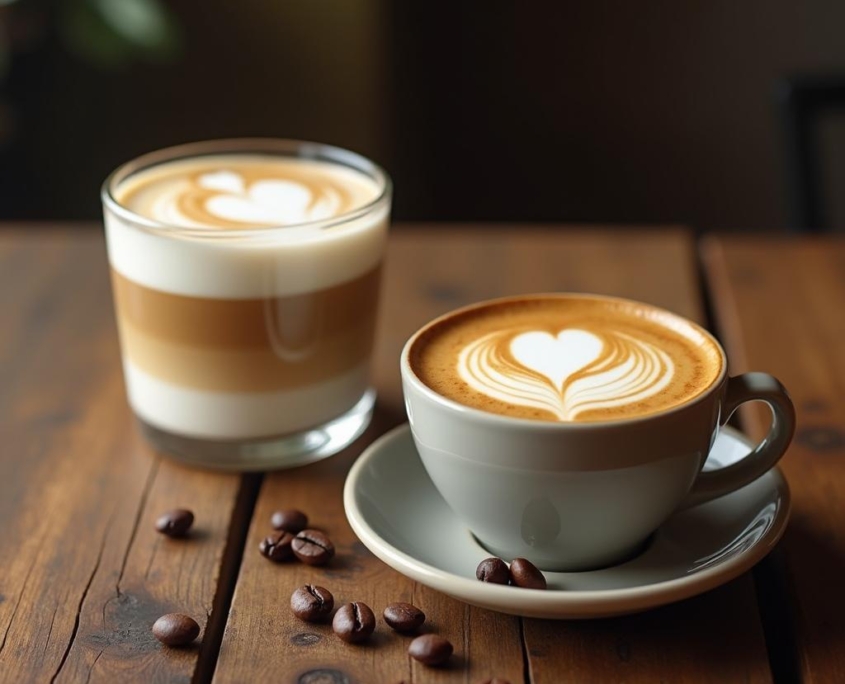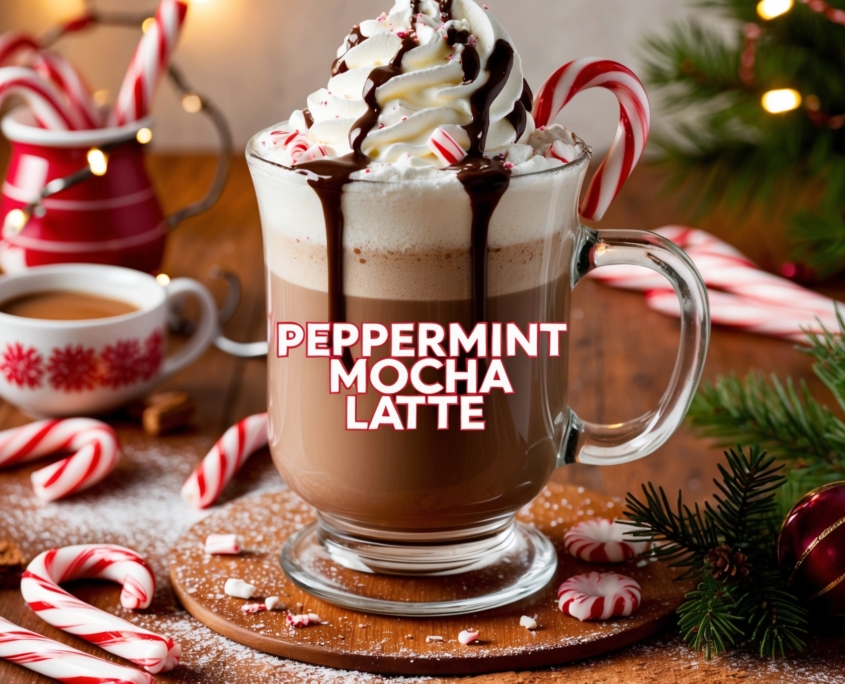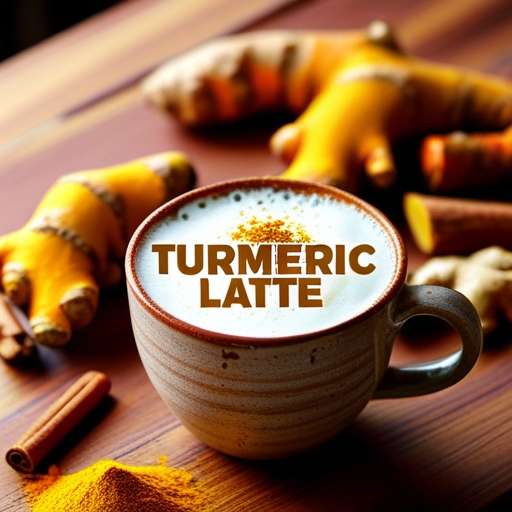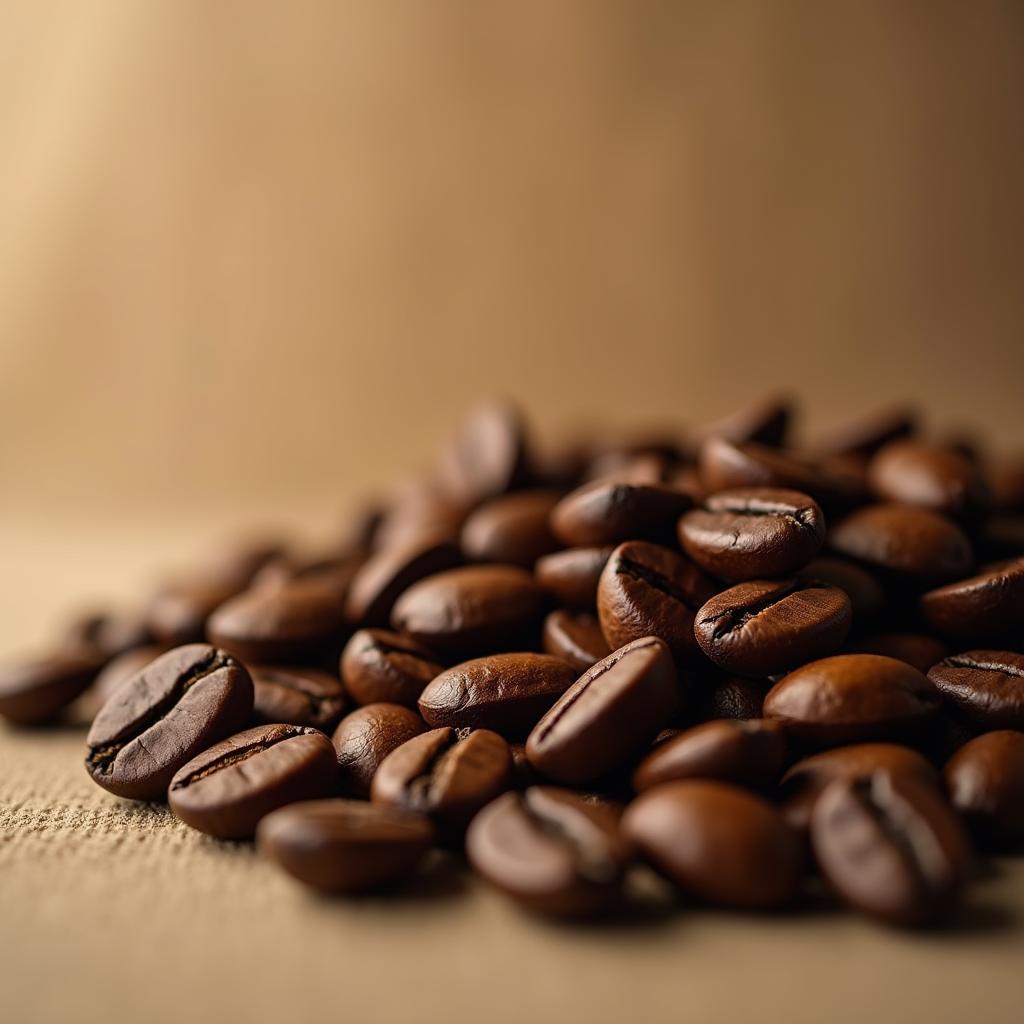Warm Up with These 5 Best Coffee Recipes This Winter ☕❄️
As it is getting colder outside, there is nothing quite like a warm cup of coffee to warmup your day. Whether you prefer something classic or a bit daring, we have got you covered! In this article, we will explore the five best coffee recipes to warm you up this winter, offering both familiarity and exciting rich flavors. Get your favorite mug and let’s brew your delightful Coffee drinks! 🎉
The Classic Hot Coffee ☕
When it comes to warming up, nothing beats a classic hot coffee! Perfectly brewed, this beloved staple is simple yet satisfying.

Ingredients:
- 1 cup of freshly brewed coffee
- 2 tablespoons of sugar (or to taste)
- 1-2 tablespoons of heavy cream (optional)
- Cinnamon or cocoa powder for garnish (optional)
Instructions:
- Prepare your coffee using your preferred brewing method.
- Add sugar and cream to taste. Stir until dissolved.
- Sprinkle with cinnamon or cocoa powder if desired.
- Enjoy your classic hot coffee while cozying up by a fire! 🔥
Spiced Pumpkin Latte 🎃
Bring the flavors of fall right into your winter with a spiced pumpkin latte! This creamy concoction will delight your taste buds.

Ingredients:
- 1 cup of strong brewed coffee
- 1/2 cup of milk (dairy or non-dairy)
- 2 tablespoons of pumpkin puree
- 1 tablespoon of sugar
- 1/2 teaspoon of pumpkin pie spice
- Whipped cream for topping (optional)
Instructions:
- In a saucepan, combine the milk, pumpkin puree, sugar, and pumpkin pie spice. Heat over medium heat until steaming, then whisk until frothy.
- Pour hot coffee into a mug and add the pumpkin mixture. Stir well.
- Top with whipped cream and a sprinkle of additional pumpkin pie spice. Enjoy! 🍂
Mocha Mint Coffee 🍫🌿
This twist on classic mocha coffee combines rich chocolate flavors with a refreshing minty finish—perfect for the holiday season!

Ingredients:
- 1 cup of brewed coffee
- 1-2 tablespoons of chocolate syrup
- 1 tablespoon of peppermint syrup
- Whipped cream for topping
- Crushed candy canes for garnish (optional)
Instructions:
- In a large mug, combine hot coffee with chocolate and peppermint syrups. Stir well.
- Top generously with whipped cream and sprinkle crushed candy canes for that extra holiday cheer!
- Sip and savor the festive flavors! ✨
Cinnamon Vanilla Latte ☕✨
Indulge in a cinnamon vanilla latte that brings warmth and comfort with every sip. It’s like a warm hug in a cup!

Ingredients:
- 1 cup of brewed espresso or strong coffee
- 1 cup of steamed milk (dairy or non-dairy)
- 1 tablespoon of vanilla syrup
- 1/2 teaspoon of ground cinnamon
- Cinnamon stick for garnish (optional)
Instructions:
- Combine brewed espresso or strong coffee with vanilla syrup in a large mug.
- Steam and froth the milk, then pour it carefully into the mug.
- Sprinkle ground cinnamon on top and add a cinnamon stick for garnish!
- Enjoy the aromatic and cozy flavors matched perfectly for winter! 🎉
Turmeric Ginger Coffee ☕🧡
Looking for something healthy yet delicious? Try this turmeric ginger coffee that packs a punch of flavor and wellness!

Ingredients:
- 1 cup of brewed coffee
- 1 teaspoon of turmeric powder
- 1 teaspoon of grated ginger
- 1-2 tablespoons of honey or maple syrup (to taste)
- Milk (dairy or non-dairy) for creaminess
Instructions:
- In a cup, combine brewed coffee, turmeric powder, grated ginger, and sweetener. Stir well.
- Add milk to your desired creaminess and give it another stir.
- Sip on this vibrant and health-boosting coffee to start your day right! 🌱
Frequently Asked Questions
1. Can I customize these recipes?
Absolutely! Feel free to adjust the sweetness, add or omit spices, or even blend in your favorite flavored syrups. The world of coffee is all about personalization! 🎨
2. How can I make these recipes dairy-free?
Simply substitute regular milk with almond, soy, oat, or coconut milk for a delicious dairy-free alternative! 🥥
3. Can I prepare these recipes in advance?
While fresh is best, you can prepare some elements like syrups or whipped cream ahead of time and store them in the fridge for quick assembly later. ⏰
4. Can I use decaffeinated coffee or espresso?
Yes, you can use decaf options to enjoy these delightful recipes without the caffeine jitters! ☁️
Before You Go
Winter is the perfect season to indulge in warm, comforting coffee drinks that awaken the senses and create lasting memories. From traditional hot coffee to creative twists like spiced pumpkin lattes and turmeric ginger coffee, your taste buds are in for a treat! Try these recipes to find your favorite winter warmer, and don’t forget to share them with family and friends. Warm up your winter with the delightful power of coffee! ❄️☕
Discover the Rich Flavors of South American Coffee: A Guide to Varieties and Brewing Techniques
Are you a coffee lover who is looking to elevate your morning brew, there is no better place to explore than South American Coffee vast varieties. From the lush landscapes of Colombia to the high-altitude farms of Peru, South America produces some of the finest coffee beans in the world, known for their unique flavors and aromas. 🌎☕ In this article, we will discover the different coffee varieties, brewing techniques, and answer some frequently asked questions to help you embark on an exciting coffee journey!
The Essence of South American Coffee
South American coffee is often celebrated for its smoothness, medium body, and vibrant acidity. The region’s coffee beans are perfectly balanced, bringing out sweet, fruity, and nutty flavors that tantalize the palate. Various countries contribute distinct characteristics to their beans:
- Colombia: Known for its smooth, mild flavor with hints of caramel and nut. Colombian coffee is often described as having a balanced sweetness.
- Brazil: Producing the majority of South America’s coffee, Brazil yields beans that are often bold, chocolatey, and low in acidity, making them perfect for espresso blends.
- Peru: Known for its organic coffee farms, Peruvian beans feature bright acidity and floral notes, with a sweet finish.
- Chile: While not as widely recognized, Chilean coffee is gaining reputation for its unique flavor profiles, often influenced by its distinct growing conditions.
Top South American Coffee Varieties to Try
Exploring South American coffee means discovering various bean varieties that lend themselves to different flavor experiences:
- Arabica: Dominant in Colombia and Peru, Arabica beans are revered for their rich flavors and aromas. They typically have a higher acidity and a wider taste profile.
- Robusta: More commonly found in Brazil, Robusta beans present a stronger, harsher taste with earthy notes and higher caffeine content, ideal for espresso blends.
- Typica: A rare but highly desirable variety, Typica is praised for its complex and nuanced flavors, often featuring notes of fruit and honey.
- Bourbon: This variety is known for its sweet, complex flavors, making it a favorite among coffee connoisseurs.
Brewing Techniques: Get the Most Out of Your Beans
Once you’ve chosen your beans, the next step is brewing. Here are some popular brewing techniques to harness the best flavors from South American coffee:
1. French Press
The French press enhances the coffee’s rich flavors and full body. Simply add coarsely ground coffee and hot water, let it steep, and then plunge for a flavorful cup.
2. Pour-Over
For clarity and brightness, try the pour-over method. This technique allows you to control the water flow over medium ground coffee, extracting delicate flavors and aromas.
3. Espresso
If you prefer strong coffee, brewing espresso will showcase the intense flavors of Brazilian beans. The high pressure extracts rich oils and concentrates the aroma.
4. Cold Brew
For a smooth, refreshing option, steep coarse grounds in cold water for 12-24 hours. This method produces a naturally sweet and less acidic coffee, perfect for warm days! 🧊
Frequently Asked Questions About South American Coffee
Q: What makes South American coffee unique?
A: The unique geographical and climatic conditions contribute to a variety of flavors. Altitude, soil type, and rainfall all affect the taste profile of the beans.
Q: How can I ensure high-quality coffee?
A: Look for beans that are 100% Arabica, sourced from reputable farms, and certified organic. Freshness is key; always grind your beans just before brewing!
Q: Can I blend different beans?
A: Absolutely! Experimenting with different varieties can create unique flavor combinations and enhance the coffee experience.
Q: How should I store my coffee beans?
A: Keep your coffee beans in an airtight container in a cool, dark place to preserve freshness and flavor.
Q: Is there an ideal brewing temperature?
A: Yes! For optimal flavor extraction, brew coffee at a temperature between 195°F to 205°F (90°C to 96°C).
Conclusion: Sip, Savor, and Explore
South American coffee offers a remarkable variety of flavors waiting to be discovered. Whether you opt for the smooth and sweet notes of Colombian coffee or the bold richness of Brazilian beans, there’s a cup perfect for your taste buds. By experimenting with different brewing techniques, you can savor the intricate profiles that make each cup a delightful experience. So, what are you waiting for? Dive into the world of South American coffee today and transform your coffee routine! ☕✨
Unlock the Rich Flavor of Bourbon Coffee Beans: A Journey into Its Unique Characteristics!
Are you a coffee fan who is looking for a rich and unique flavor to awaken your senses, Bourbon coffee beans might just be your new obsession! With their vibrant taste and fascinating origins, Bourbon coffee offers more than just a caffeine kick; it provides a sensory experience 🌍. In this blog, we’ll explore what makes Bourbon coffee beans special, answer frequently asked questions, and provide actionable insights to help you enjoy these remarkable beans fully.
What Are Bourbon Coffee Beans?
Bourbon coffee beans are a variety of Arabica coffee, renowned for their exceptional flavor profile. Originating on the island of Bourbon (now Réunion), this coffee type is celebrated for its smooth, balanced taste and bright acidity. The Bourbon variety is particularly sensitive to environmental conditions, making it both a treasured find and a bit of a rarity in the coffee world.
Unique Characteristics of Bourbon Coffee Beans
- Flavor Profile: Expect sweet, chocolaty notes paired with hints of fruit and floral essences. Each sip tells a story and offers a delightful complexity that can elevate your coffee palate. ☕
- Acidity: Bourbon coffee beans possess a bright acidity, which is a defining feature of high-quality Arabica coffee. This can result in a clean finish that lingers on the palate.
- Body: The body of Bourbon coffee is medium, giving it a pleasant mouthfeel without overwhelming heaviness. This means it’s perfectly drinkable at any time of the day.
- Processing Methods: Bourbon beans are primarily processed using either washed or natural methods, contributing to their unique flavors. The processing method can enhance their fruity notes or create a deeper chocolaty profile.
How to Brew the Perfect Cup of Bourbon Coffee
Brewing Bourbon coffee beans can be as intricate or straightforward as you desire. Here’s how you can create an exquisite cup at home:
- Choose Fresh Beans: Always opt for freshly roasted Bourbon coffee beans. Their flavor peaks shortly after roasting, ensuring that you savor the full spectrum of taste!
- Grind Just Before Brewing: Use a burr grinder to achieve a consistent grind. For optimal flavor, aim for a medium grind size.
- Optimal Water Temperature: Use water between 195°F and 205°F (90°C to 96°C). This will help extract the flavors without giving an unpleasant bitterness.
- Brew Time: Aim for a brew time of 4-5 minutes for methods like pour-over or French press. Adjust according to your taste preference!
FAQs About Bourbon Coffee Beans
1. What’s the difference between Bourbon and other coffee beans?
The main difference lies in flavor and genetics. While many coffee beans may share a similar plant lineage, Bourbon coffee beans are bred specifically for their superior flavor profile and lower yield, making them somewhat rarer.
2. Are Bourbon coffee beans more expensive?
Yes, due to their rarity and the attention required to cultivate them, Bourbon beans often come with a higher price tag. However, many enthusiasts believe that the investment is worth it for the unique flavor experience.
3. How can I enjoy Bourbon coffee without brewing it?
If you want to appreciate the Bourbon flavor without brewing, consider purchasing Bourbon coffee-flavored products, such as syrups or infused chocolates. 🌟 This way, you can experience its essence through desserts or cocktails!
4. Can you find Bourbon coffee beans in supermarkets?
While some supermarkets may carry Bourbon coffee, it’s often best to seek out specialty coffee shops or online retailers that specialize in gourmet coffee to ensure you’re getting high-quality beans.
5. What’s the best roast for Bourbon coffee beans?
Many coffee enthusiasts prefer a light to medium roast for Bourbon coffee due to its ability to highlight the bean’s natural sweetness and acidity. Dark roasts can mask these unique traits.
Why You Should Try Bourbon Coffee Beans Today!
If you haven’t yet explored the rich, flavorful world of Bourbon coffee beans, now is the time! This exceptional variety isn’t just a beverage; it’s an adventure in every cup. Whether you enjoy it black, with a splash of cream, or as a base for your specialty drinks, Bourbon coffee offers an experience that’s truly unforgettable. 🌟
Conclusion
Bourbon coffee beans are a true gem in the coffee landscape, showcasing remarkable flavors and characteristics that every coffee lover should experience. From brewing the perfect cup to understanding its unique traits, Bourbon coffee is an exploration worth embarking on. Don’t wait! Discover the delightful world of Bourbon coffee beans today and ignite your coffee passion like never before! ☕✨















